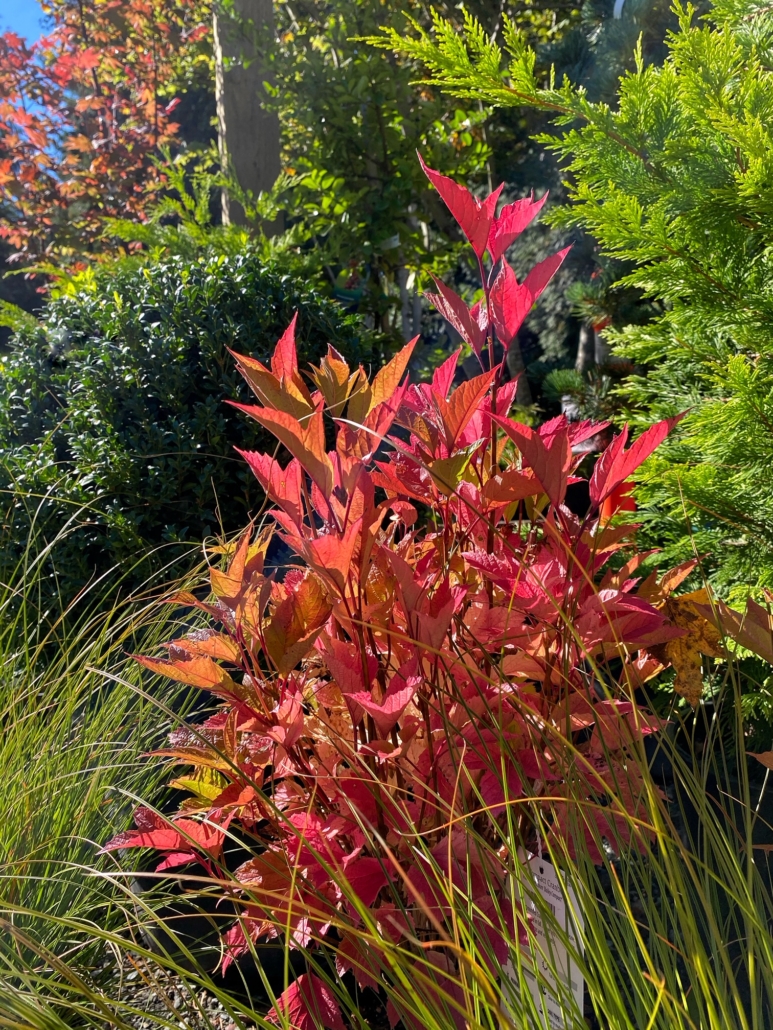Fall Planting Dos and Don’ts for the Pacific Northwest
Fall is the best time for planting!
Fall is a great time to plant here in the Pacific Northwest. Cool temperatures and increased moisture mean lower transpiration rates, making fall planting and transplanting less stressful for a plant than in spring or summer.
Don’t wait for spring!
Fall-planted trees, shrubs, and perennials develop more established root systems. Plants that seem to be “sleeping” during the winter are actually hard at work growing roots. Between October and March, there are several root growth cycles. A shrub planted in the fall will be more robust and resilient than the same shrub planted the following spring.
Do plant before the ground freezes!
Plants are more insulated in the ground than above it. If you have plants still sitting around in their pots, it’s better to get them into the ground than to leave them unplanted. Even if you are unsure of where they should go, plant them somewhere. You can always transplant them later! If you must leave plants unplanted, bring them into a cool garage or at least insulate their pots/root balls with some mulch, in a pile of autumn leaves, or stack some evergreen boughs around them. If you can get a shovel in the ground with relative ease, you can plant, which is the best solution.
Do check for water!
Our abundant rainfall in winter usually means less work for the gardener. Soils typically remain moist between October and April. But sometimes we see dry spells, and winter winds can be desiccating. Areas under eaves or large evergreens can tend toward the dry side as well. Don’t assume that since it is raining, your plants are well watered. Do go out and feel the soil to see if it is moist several inches down. You may need to supplement occasionally.
Do mulch!
Our fall and winter temperatures can vary, and these temperature changes can be a bit hard on roots. Providing a nice blanket of mulch can help moderate soil fluctuations, which your plants will appreciate. Plus, keeping the soil “in the dark” will suppress those cool-season weeds! Just remember to keep the mulch away from the trunks and crowns of your trees and shrubs, and don’t bury your perennials!
Do consider staking!
During the winter, we can get winds that can impact unrooted trees. Do consider staking fall-planted trees to help keep them straight. Remember to give them some wiggle room and not tie them too tightly. Here is a short video guide from the International Society of Arboriculture for staking trees.
Don’t fertilize!
Fertilizing can confuse a plant, making it think it is time to grow when it’s not. Fall-planted trees and shrubs rarely need any fertilizer. It is best to wait until March or April to feed your plants.
Don’t prune!
In general, it is best not to cut back plants at the time of planting. The exception would be any broken branches. Keep the trimming of newly planted trees and shrubs to a minimum at this time.
I hope this article has encouraged you to keep gardening this autumn! Take advantage of the benefits of this time of year and invest in the beauty of your yard and garden for all the seasons to come.

